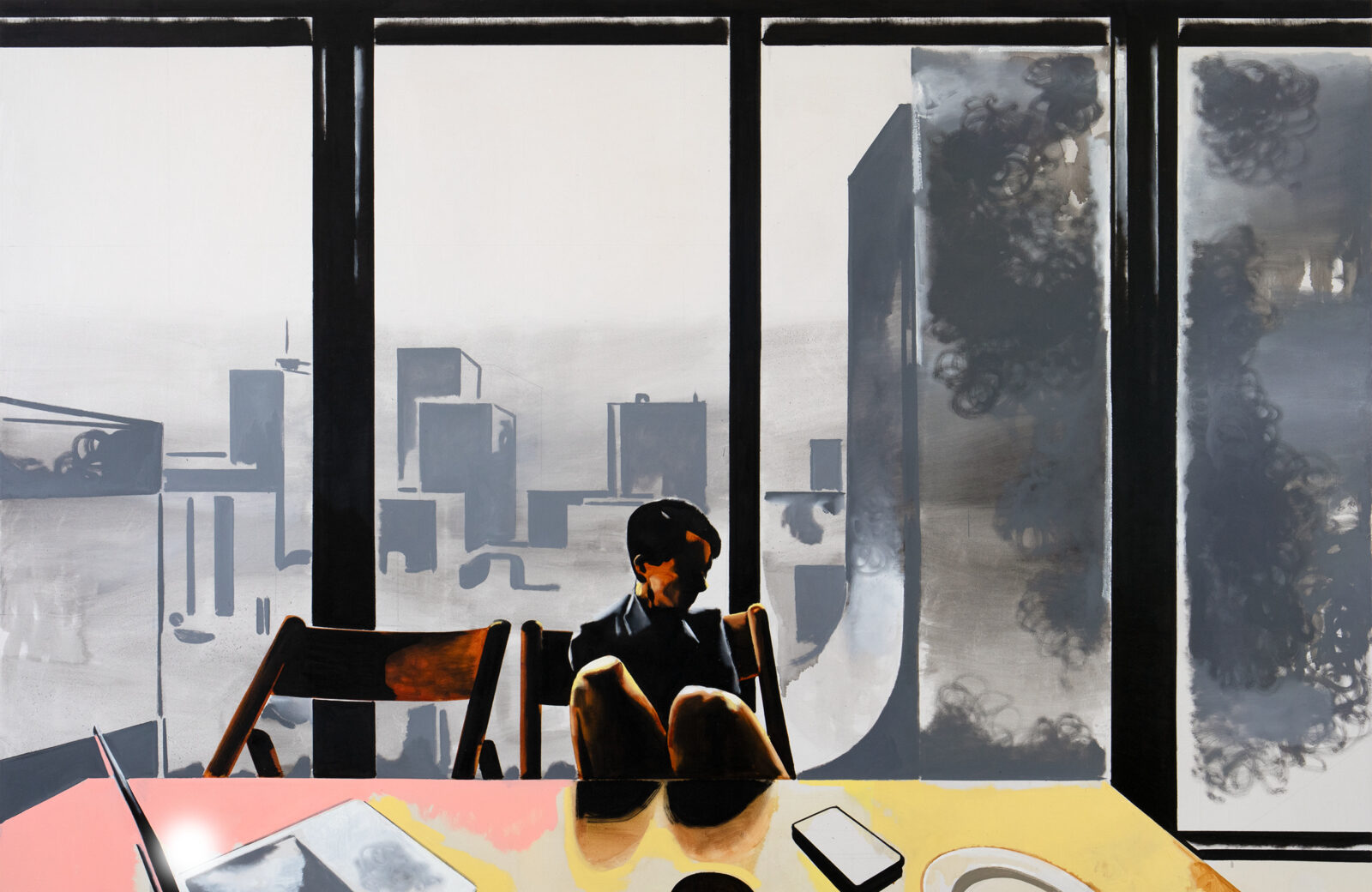Wilhelm Sasnal
Sadie Coles HQ, London
24 January – 16 March 2024
Wilhelm Sasnal continues to question what painting is in a visually and artistically saturated present. In his case, painting itself is indeed enlisted in an impassioned struggle against the contemporary condition of precariousness, instability, and constant change. The exhibition at Sadie Coles HQ showcases a meticulous selection of paintings by the Polish artist, created between 2021 and 2023, without an apparent standardization of dimensions and themes across the works. However, as a whole, the exhibition unmistakably situates the viewer not only in a geographical environment but also in a landscape mediated by digital technology, production cycles, and the general swarm of news from mass media. Sasnal’s paintings not only depict the ambivalence of reality but also invite us to consider our place within it.

Sasnal regularly uses photographic images taken from films, exhibitions, posters, or snaps from his own phone as a starting point for his paintings, which then undergo various levels of distortion or abstraction. Since his work often addresses historically weighty themes, such as the Holocaust or the conditions of post-Communist Poland, Sasnal’s paintings intentionally reject the idea of a realistic representation and embrace the subjectivity and reflective position of the painter’s mark. A mesh fence hovers unnaturally in front of an immense body of water; the heavy materiality of the chain is rendered on canvas and simultaneously suspended on all sides, disconnected from the ground, obstructing our view. The effect of physical impossibility is privileged over its true representation, drawing the viewer closer to an imaginary sensation of the scene. Here, the distinction between a painterly surface as a plane of affective interactions and the surface as a frame within which to see the world becomes blurred.

This introduces a separation between the viewer and the represented scene, yet in doing so, the sensation of distance and isolation is foregrounded and becomes the subject of the work itself. The depiction of fences, limits, and borders extends throughout Sasnal’s production, primarily in paintings set in Los Angeles, continuing a broader series of works based on his time in his studio in the city. Unmistakably, the graffiti-covered wall with the inscription LA IS NOT SAFE introduces the theme of violence and unrest in a place typically described as glamorous and secure for tourists. Elsewhere, on the hyper-realistic representation of an interaction between two humans on the street, a single continuous and intertwined line of blue paint, resembling a doodle, obstructs the scene. The abstract intervention takes us out of the mode of passive observation, undermining the possibility of using the neutral gaze of a documentarian.







